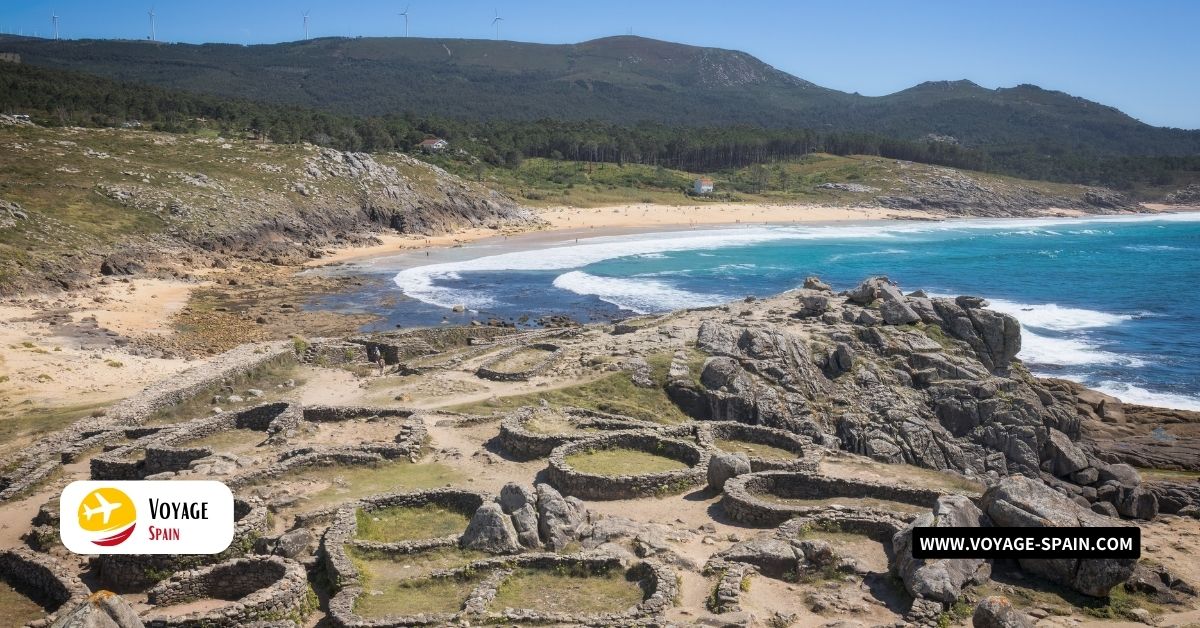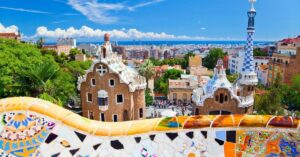Introduction
While Spain’s Roman and Moorish legacies often take center stage, the Celtic heritage of Galicia offers a captivating glimpse into a bygone era, adding depth and diversity to Spain’s rich historical narrative. As we embark on a journey through Galicia’s Celtic ruins, we peel back the layers of time to uncover a hidden chapter in Spain’s past, illuminating the interconnectedness of cultures that have shaped this enchanting land.
Unraveling the Celtic Legacy
Delving into the depths of Galicia’s history unveils a rich tapestry woven with the threads of Celtic heritage. From pre-Roman times, the region has been imbued with the spirit of Celtic civilization, leaving an indelible mark on its culture and traditions.
Tracing Back in Time
- Galicia’s Celtic roots run deep, predating the Roman conquest and stretching back to ancient times.
- Evidence of Celtic settlements and artifacts unearthed in archaeological digs provide insights into the early presence of Celts in the region.
- The Celtic tribes of Galicia flourished in harmony with nature, establishing a connection to the land that endures to this day.
Unveiling Unique Characteristics
- Galicia’s Celtic culture was characterized by its reverence for nature, reflected in rituals and ceremonies honoring the elements.
- The social structure of Celtic communities in Galicia was built upon kinship ties and a sense of communal solidarity.
- Artistic expressions, such as intricate metalwork and symbolic motifs, showcased the creativity and craftsmanship of the Celtic people.
Embracing Celtic Traditions Today
- The legacy of Celtic traditions continues to thrive in contemporary Galician culture, manifesting in vibrant music, lively folk dances, and spirited festivals.
- Folklore and mythology rooted in Celtic tales are woven into the fabric of Galician storytelling, enriching the cultural landscape.
- The Galician language, infused with Celtic influences, preserves ancient linguistic elements that echo the voices of generations past.
Exploring Galicia’s Hidden Treasures
Embarking on a journey through Galicia unveils a treasure trove of ancient wonders, offering a glimpse into the rich tapestry of Celtic heritage that flourished in this enchanting region.
Key Archaeological Sites
- Castro de Baroña: Perched dramatically on a rocky promontory overlooking the Atlantic Ocean, this site boasts circular stone houses, fortified walls, and a labyrinth of narrow streets, providing a vivid snapshot of Celtic settlement life.
- Santa Tegra: Situated atop Mount Santa Trega, this site offers panoramic views and a fascinating array of archaeological remains, including ancient dwellings, religious sanctuaries, and communal spaces, all offering insights into Celtic social organization and spiritual beliefs.
- Castro de Viladonga: Nestled amidst verdant greenery, this site features remarkably well-preserved stone structures, including dwellings, granaries, and a central plaza, offering a glimpse into the daily rhythms of Celtic life, from agriculture to trade and craftsmanship.
- Castro de Borneiro: Located near the village of Borneiro, this archaeological site reveals the remnants of a fortified Celtic settlement, including defensive walls, housing structures, and communal spaces, shedding light on the strategic importance of such settlements in ancient Galicia.
- Monte dos Mouros: Translating to “Hill of the Moors,” this site in the municipality of Tui features remnants of a Celtic hillfort, with defensive ramparts, stone structures, and panoramic views of the surrounding landscape, providing valuable insights into Celtic defensive strategies and territorial control.
Architectural Features and Artifacts
- At Castro de Baroña, visitors can marvel at the sturdy stone constructions and defensive walls, while exploring artifacts such as pottery, tools, and jewelry that provide tangible links to the daily lives of Galicia’s ancient Celts.
- Santa Tegra offers a captivating array of artifacts, including religious artifacts, such as votive offerings and figurines, as well as everyday items like cooking utensils and decorative ornaments, shedding light on both the spiritual and mundane aspects of Celtic existence.
- Castro de Viladonga boasts a wealth of artifacts, from intricately carved stone sculptures to finely crafted metalwork, offering insights into the technological prowess and artistic sophistication of Galicia’s Celtic inhabitants.
Preservation and Conservation Efforts
Preserving Galicia’s Celtic ruins comes with its share of challenges. Environmental degradation poses a threat as natural forces erode the ancient structures over time. Additionally, urban development encroaches upon archaeological sites, putting them at risk of being overshadowed or destroyed. Furthermore, the illicit practice of looting deprives these sites of valuable artifacts, robbing future generations of their cultural heritage.
Despite these challenges, concerted conservation efforts are underway. Collaborative initiatives and partnerships between government agencies, archaeologists, and local communities aim to protect and safeguard Galicia’s archaeological treasures. Through measures such as site monitoring, restoration projects, and public education campaigns, these initiatives seek to ensure that Galicia’s Celtic ruins remain intact for future generations to explore and appreciate.
Responsible tourism and community involvement play vital roles in preserving Galicia’s cultural heritage. By promoting sustainable tourism practices, visitors can minimize their impact on archaeological sites while contributing to their preservation through entry fees and donations. Meanwhile, engaging local communities fosters a sense of ownership and pride in Galicia’s heritage, encouraging active participation in conservation efforts and ensuring that these ancient treasures continue to inspire and enrich the region for years to come.
Galicia’s Celtic Connection: Bridging Past and Present
Galicia’s Celtic heritage continues to resonate strongly in modern-day culture, infusing local festivals, traditions, and everyday practices with echoes of the ancient past. From lively music and dance celebrations to culinary traditions and seasonal rituals, elements of Celtic influence permeate throughout Galician life, serving as a vibrant reminder of the region’s rich cultural legacy.
Celtic revival movements in Galicia play a pivotal role in fostering awareness and appreciation of the region’s ancient roots. Through initiatives such as language revitalization efforts, historical reenactments, and educational programs, these movements seek to reconnect Galicians with their Celtic heritage, revitalizing cultural traditions and strengthening a sense of identity rooted in the region’s ancient past.
Embracing Spain’s diverse heritage, including its Celtic legacy, is not only a matter of cultural pride but also a source of national identity. By acknowledging and celebrating the multifaceted tapestry of Spain’s history, encompassing Celtic, Roman, Moorish, and other influences, individuals and communities can forge stronger bonds and a deeper appreciation for the rich mosaic of cultures that have shaped the nation’s collective identity over the centuries.
Conclusion
In our exploration of Galicia’s ancient Celtic ruins, we’ve uncovered a fascinating chapter in Spain’s historical narrative, one that adds depth and diversity to the country’s cultural heritage. These ruins serve as tangible reminders of the rich tapestry of civilizations that once thrived in this enchanting region, offering valuable insights into the daily lives, beliefs, and traditions of Galicia’s ancient inhabitants.
Preserving and celebrating cultural heritage is not just about honoring the past; it’s also about forging connections that transcend time and space. By safeguarding these archaeological treasures, we ensure that future generations can continue to learn from and be inspired by the legacies of those who came before us. So, whether you’re a history enthusiast or simply curious about the world around you, I encourage you to embark on your own journey of discovery, to uncover Spain’s hidden treasures and experience the timeless allure of Galicia’s Celtic heritage firsthand.
FAQs
Q1: Does Galicia Have Celtic Heritage?
Yes, Galicia has strong Celtic heritage, with evidence of Celtic settlements dating back to pre-Roman times.
Q2: What Is Galicia Spain Famous For?
Galicia is famous for its stunning coastline, delicious seafood, rich cultural heritage, and vibrant festivals such as the Festival of St. James in Santiago de Compostela.
Q3: Why Is Galicia Different In Spain?
Galicia stands out in Spain due to its distinct Celtic influence, unique language (Galician), lush green landscapes, and maritime traditions.
Q4: Why Is Galicia Considered Celtic?
Galicia is considered Celtic due to its historical and cultural connections to Celtic tribes that inhabited the region before Roman conquest.
Q5: What Is A Celtic Heritage Town In The Region Of Galicia?
One notable Celtic heritage town in Galicia is Cedeira, known for its Celtic music festival and preserved Celtic ruins.
Q6: What Is An Interesting Fact About Galicia?
An interesting fact about Galicia is that it is home to the Way of St. James (Camino de Santiago), one of the most famous pilgrimage routes in the world, attracting thousands of pilgrims each year.












